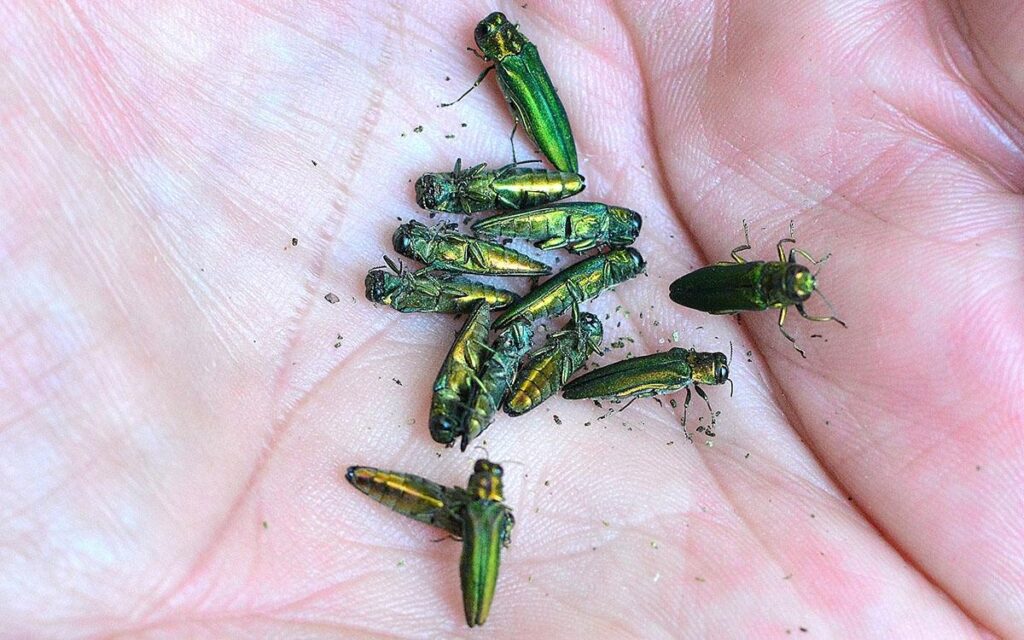Emerald Ash Borers Contribute to Rising Urban Temperatures

The ash tree, although not as iconic as the maple or as majestic as the oak, is a significant contributor to North American urban landscapes. In cities such as Dallas and Chicago, ash trees comprise about 13% and 17% of all city trees respectively. By providing shade and evaporating water through their leaves, they help mitigate extreme heat in urban areas.
However, the ash tree population faces a significant threat from the invasive emerald ash borer. These tiny insects lay their eggs in the tree’s bark and can kill an ash tree within a few years. According to the US Department of Agriculture, this bug has spread to 36 states, DC, and five Canadian provinces, decimating millions of ash trees. Recent research suggests that the loss of these trees could exacerbate rising temperatures in urban areas.
Ecologist Emma Hudgins explains that the bugs lay their eggs under the tree’s bark, where the larvae chew around, disrupting the tree’s nutrient and water transport. “It essentially cuts off the circulation of the tree,” Hudgins states.
Chicago, one of the first major American cities to encounter the ash borer in 2002, has seen devastating results. A report by the local Morton Arboretum indicates that the ash tree population in the Chicago area dropped from about 13 million in 2010 to under 7 million by 2020, with 4 million more trees either dying or already dead.
Urban areas naturally experience higher temperatures than rural areas due to the heat absorption properties of concrete and asphalt. Trees help to mitigate this effect by blocking sunlight and dispersing heat. The loss of ash trees could therefore contribute to higher urban temperatures. A 2019 study found that in US counties with emerald ash borers, average monthly temperatures increased by 0.09°F, and max monthly temperatures increased by 0.28°F after the insects appeared.
Efforts are being made to slow the spread of the ash borer and replace lost ash trees. Climatewire reports potential support from federal funding. Horticulturist Nathan Maren from the Morton Arboretum in Chicago suggests the need for planting diverse tree species, and building resilient and sustainable urban forests. The Morton Arboretum is also researching ash tree varieties that may be more resistant to the ash borer.
Related topics: climate change, urban planning, land use and planning, federal climate policy
Original Story at www.sierraclub.org
